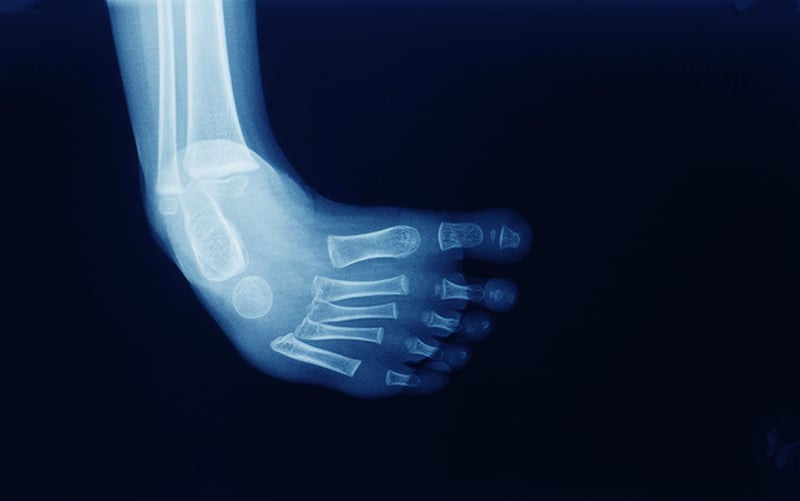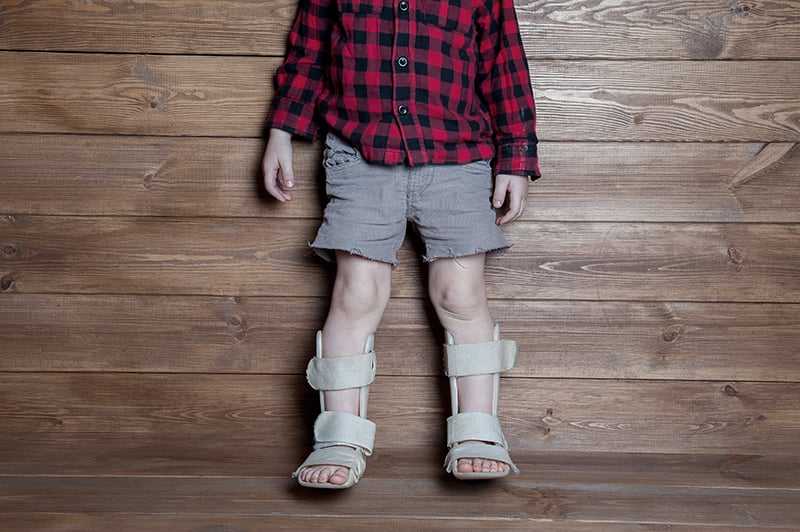Feet are one of the organs that require special attention because having normal, un-deformed feet reassures parents that their child is unlikely to have any problems with walking. However, some children may have the chance of being born with foot deformities as well.
The Importance of Feet
Feet consist of toes and the foot itself. The toes are arranged from largest to smallest, with five toes per foot, equal to the number of fingers on the hand. The shape of the foot is somewhat oval, possibly slightly curved on the inner edge or the arch of the foot, while the outer edge must be straight. Human feet are composed of several bones connected together, allowing flexibility in many directions. This flexibility provides a softness when walking and evenly distributes impact across the foot, preventing pressure points. The part of the foot that connects to the shin at the ankle requires good movement of the ankle as well. Walking relies on instructions from the brain, and all parts of the foot work together to support and move the body’s weight when standing, walking, running, and jumping. If the movement of different joints in the foot and ankle is not good, it can still bear the body’s weight, but the softness in walking will be lost, leading to non-uniform distribution of force across the foot and potentially causing foot pain.

Foot Deformities in Young Children
Conditions related to feet that can be found in newborns include:
- Toes that are bent or angled
Toes that bend or curl, usually affecting the ring and little toes. If you observe the parents’ feet, you might find a similar condition, as it can be genetically inherited. Generally, toes are quite bent at birth but gradually straighten as the child grows, and usually, it doesn’t cause clear harm. Treatment is mostly observational rather than trying to straighten the toes, which doesn’t prove to yield better results over time. Very few people grow up with significantly deformed toes that cause pain when walking, possibly needing surgical treatment. - Having more or less than five toes per foot
Usually, the absence of a toe doesn’t cause any problems and is hard to notice, but extra toes might rub against the shoe, causing pain. The issue with tight shoes can be resolved by wearing shoes with a wide toe box. However, in some cases where the extra part is significant, wearing wide shoes still causes discomfort, and surgical treatment might be necessary to remove the excess toe. - Webbed toes
Usually, it’s not a problem if toes are completely connected, but if there’s a partial gap that makes cleaning difficult and allows for dirt accumulation, surgical separation might be considered. - Feet that are turned up and outward
The most common foot deformity is where the back of the foot is attached to the shin bone, frequently observed in first pregnancies. This is believed to be due to the uterus not having been stretched before. As the child grows, movement becomes difficult due to being cramped in the uterus, pushing against its wall for months. Upon birth, the foot can stay deformed but has the chance to move freely, usually correcting itself in about 1 – 2 months. - Clubfoot
A common condition where the heel twists inward, the side of the foot is highly curved, and the foot is in a tiptoe position. It is difficult to move the foot because the joints from the toes to the ankle are tight. This condition may occur alongside several other diseases. Therefore, after diagnosing this condition, it is advisable to check for other co-occurring diseases. Fortunately, treatment by gradually molding the foot and using a cast is very effective, especially if started from a young age. Treatment can begin from day one after birth. Some might start treatment late but can still be corrected, sometimes requiring surgery. This condition has a genetic predisposition, so if the parents had the condition, their children are at a higher risk. - Curved foot
This condition occurs when the front half of the foot curves inward. When looking from the sole of the foot, the edge curves inward. If the condition is mild, trying to straighten the foot by hand might show that it can be realigned. In children with mild symptoms, observation might lead to natural correction within 6 – 12 months. But in severe cases, where straightening by hand is not possible, treatment should involve the use of a cast. Children who are treated early usually recover without the need for surgery. This condition may also occur alongside congenital hip dislocation, thus a thorough physical examination, and if uncertain, an ultrasound of the hips, might be considered.

Foot Deformities with the Nervous System and Brain
Since the brain controls the functioning of the feet, abnormalities in the nervous system and brain can also be reflected in foot deformities. Diseases of the brain that frequently cause tip-toeing include cerebral palsy, which is common in children born prematurely or with difficult births. These children often walk late, are stiff, and may have seizures or spasms. If such symptoms are present, it’s recommended to see a neurologist to treat the brain condition first, as the foot issues can be addressed later. It’s evident that foot diseases vary, and the causes are not always clear, making them hard to prevent. However, there is no need to worry as most conditions gradually improve on their own or can be treated without surgery. What is crucial is that parents should start treatment when their children are very young. Parents who had foot diseases as children should have their newborns checked for any abnormalities to ensure prompt treatment.
